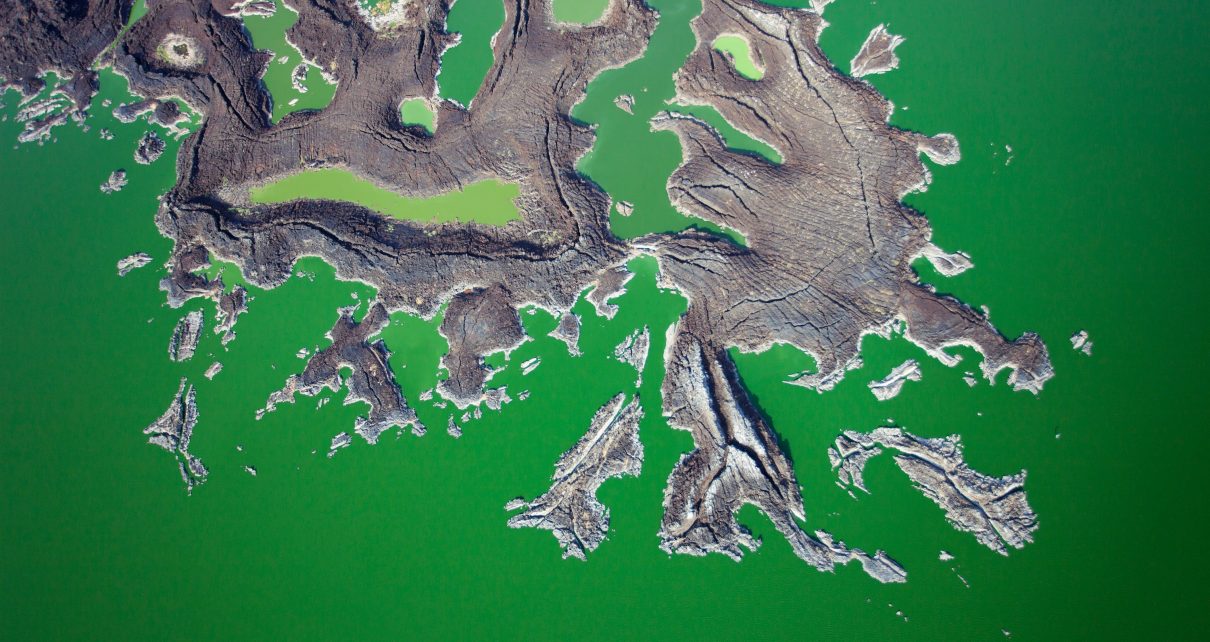The region around Lake Turkana in northern Kenya is a desert landscape. To a Californian, the look of the hills and rocks and washes is familiar even if the vegetation is not. Bumping along in a land cruiser, we must have crossed a half dozen dry riverbeds. Their size made it clear that, at least some of the time, water could be present—and violent.
Like stormwater in the desert, time has many aspects. In Turkana, my family and I were on vacation time—two weeks packed with a wedding, a safari and a fortuitous visit to a fossil site. It had the feeling of many months concentrated into short span, like summer camp or the beginning of college. Quite unlike middle-aged home life where I measure time in dishwasher loads.
Our host in West Turkana was a paleontologist named Patricia Princehouse, whom we met by chance on the airplane. For a paleontologist, time can be measured in tens or hundreds of millions of years. Patricia’s time is Oligocene time, from 23 million to more than 30 million years before present. Fossilized wood at her site suggests there were forests then. She and her crew are looking for the primates that lived in those forests.
On the morning we joined them, the crew were examining a patch of ground with rocks and debris that had eroded out of the nearby hills. They were looking for bits and pieces of fossils, ultimately trying to figure out where they should go to find bigger fossils. Patricia’s crew consists almost entirely of local Turkana people. Many of them are experienced fossil hunters affiliated with the Turkana Basin Institute. A few are local kids that she has recruited and trained. They incorporated us into their work without a fuss, and we spent more than an hour examining rocks and pebbles, looking for anything out of the ordinary. My kids approached a graduate student named Emmanuel with candidates. Among other things, he told us that if you lick a fossil, sometimes it will absorb the wetness, and your tongue will stick. In the end, I didn’t find anything, but my daughter discovered a tooth, which was marked with a flag and duly entered in the log.
GPS coordinates are one of the details included in that log. If it is later desirable to precisely date the site, this allows others such as geologists to find it independently. Dating rocks is an important subdiscipline in geology, its practitioners almost a tribe of their own. In the Turkana Basin and in the larger rift valley to which it belongs, their efforts are greatly aided by a long history of volcanism. Sedimentary and volcanic rock layers are interspersed, and absolute dates can often be obtained from volcanic rocks with potassium-bearing crystals. Potassium has a radioactive isotope that decays into argon. When this happens inside a crystal, the resulting argon atom will remain trapped there, even though argon is a gas. After many millennia in its crystal prison, this atom may perhaps be found and measured. With knowledge and cleverness, a geologist can use this to date many things.
While the exact time of Patricia’s site isn’t known, it is more than 23 million years before present. In contrast, many of the most famous fossil localities in Turkana are much younger. Patricia and a member of her crew named Francis Ekai took us to visit Nariokotome, where a 1.6-million-year-old Homo erectus skeleton was found in 1984. Francis is from Nariokotome village, and as a boy he actually participated in those excavations. He told us that the initial fragment was found when fossil hunter Kimoya Kimeu went out for a smoke along the Nariokotome river. He noticed a black fragment of Homo erectus skull on the surface. In the months that followed, a skeleton was recovered piece by piece. It ended up being one of the most complete ancient humans ever found.
Today the site is fenced off. The keys are kept by a local woman who opens it for visitors. Inside there is an obelisk and a reconstruction of the skeleton. (The original is now at the Kenya National Museum). The Turkana boy, as this fossil is called, is thought to have been between nine and 12 years old when he died. It is interesting to reflect that, like Francis, I was a boy about that age in 1984. Which makes us both middle-aged now. If time is like a rocky stream, it is a steeper stream for adults than kids. Our own childhoods seem to have occupied a long span of time.
But when we observe our children growing up, it goes by in a flash, like water pouring down a canyon. It is surprising for me to realize that there has now been more time since my oldest child was born than there will be till my youngest leaves. Psychologists think this phenomenon, the fact that years seem to go by more quickly as we age, has to do with the rate that we encounter novelty. Our brain has evolved to keep new experiences as memories and to throw out things that are routine or unsurprising. When we look back on a period of time, if it has more memories associated with it, we perceive it as having gone by more slowly.
Adult life inevitably involves less novelty than childhood, and thus seems to pass more quickly when we look back on it. While this explanation is satisfying on some level, it does not really assuage my regret at time passing. Maybe it is symbolic that halfway through our trip, my phone battery died, and I was left without my normal means of telling time. After that, I needed to rely on my son, who wears a big digital watch on his arm.
The radioactive decay of potassium-40 is one kind of geological clock. It has a half-life of more than a billion years. But just as human time can vary among circumstances and individuals, so it is with geological processes. The rift valley results from an upwelling of magma in the Earth’s mantle that is slowly splitting the continent of Africa in two. This process is operating on a time scale of tens of millions of years. Those large, dry riverbeds we saw reflect an even faster process, erosion. Powerful flows of water rip away stone and soil and can act on the timescale of hours or even minutes. We once got a taste of this backpacking in our home mountains near Los Angeles. A freak thunderstorm brought an inch and a half of rain overnight, and when we came out of our tents in the morning, the world around looked completely different. It seemed every rock had been moved.
The sun was going down as we rode back to our hotel in Lodwar, passing over the riverbeds again one by one. Like streams of time in a human life, those riverbeds all lead to the same place. In the Turkana region the place is the lake, and from the lake there is no outlet to the ocean. For a water molecule, the only hope of passing beyond is evaporation. From the window, I watched a fading vista of rocks, hills and distant volcanoes. Those volcanoes are a reminder that geology has the last word. Millions of years in the future, the Turkana region will not only connect to the ocean, it will be the ocean floor, an ocean floor separating two new continents.




